No one appreciated the beauty of trees, and immortalized them in literature, more than J.R.R. Tolkien. “I am at home among the trees,” said Legolas the elf in The Fellowship of the Ring, but it might as well have been Tolkien himself speaking. Under a black pine in the Oxford Botanic Gardens, the author sat and penned part of his famous trilogy, inspired by the unique trees and plants surrounding him. Tolkien viewed trees as living, breathing creatures with humanlike characteristics, and it’s easy to see why. From Japan’s bamboo forests to the ponderosa pines of Utah, the world’s trees are as diverse and beautiful as its people. Here are the most unique trees and forests around the world that will give you a Tolkien-esque love for trees.
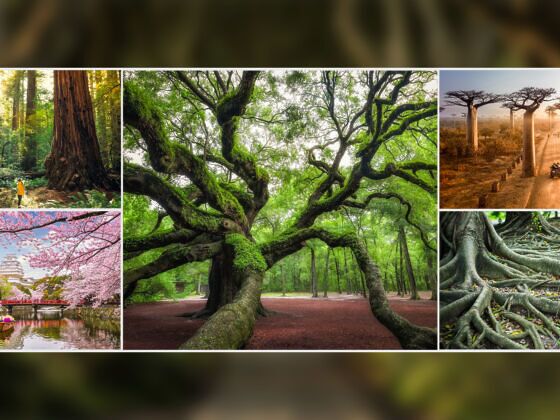

The 25 Most Spectacular and Unique Trees and Forests on the Planet
Avenue of the Baobabs — Morondava, Madagascar
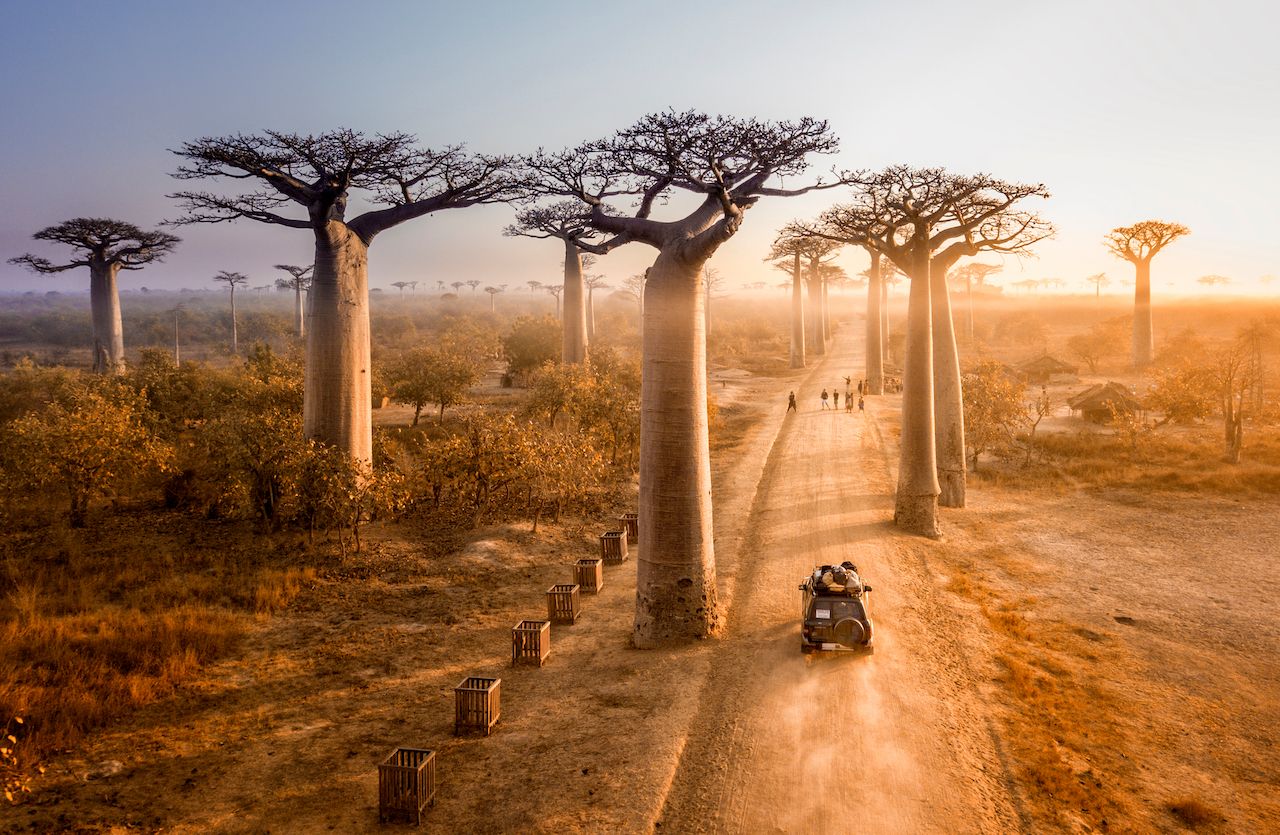
Photo: Michail_Vorobyev/Shutterstock
Madagascar is known for its otherworldly-looking giant baobabs, which you can easily find lining the road between Morondava and Belon’i Tsiribihina. The “Avenue of Baobabs,” as it is known, is considered the most accessible place to see baobabs in Africa, and the most beautiful road in Madagascar. Baobabs can reach heights of nearly 100 feet, and live to more than a thousand years.
Dragon’s Blood Trees — Socotra Island, Yemen

Photo: Naeblys/Shutterstock
Found on the Yemeni archipelago of Socotra in the Indian Ocean, dragon’s blood trees get their name from the red sap they produce. Given the island’s separation from the mainland about 20 million years ago, unique flora has been allowed to grow there undisturbed. According to National Geographic, 37 percent of the island’s 825 plant species are found nowhere else in the world.
The Dark Hedges — County Antrim, Northern Ireland

Photo: Michael Rocktaeschel/Shutterstock
This tunnel of beech trees in County Antrim, Northern Ireland, was planted back in the 18th century to impress those approaching the Georgian mansion, Gracehill House. Today, the Dark Hedges are well-known for being featured in HBO’s Game of Thrones, where they stand in as the Kingsroad, a road with Castle Black in the North at one end and King’s Landing in the South at the other.
Redwoods — California, US
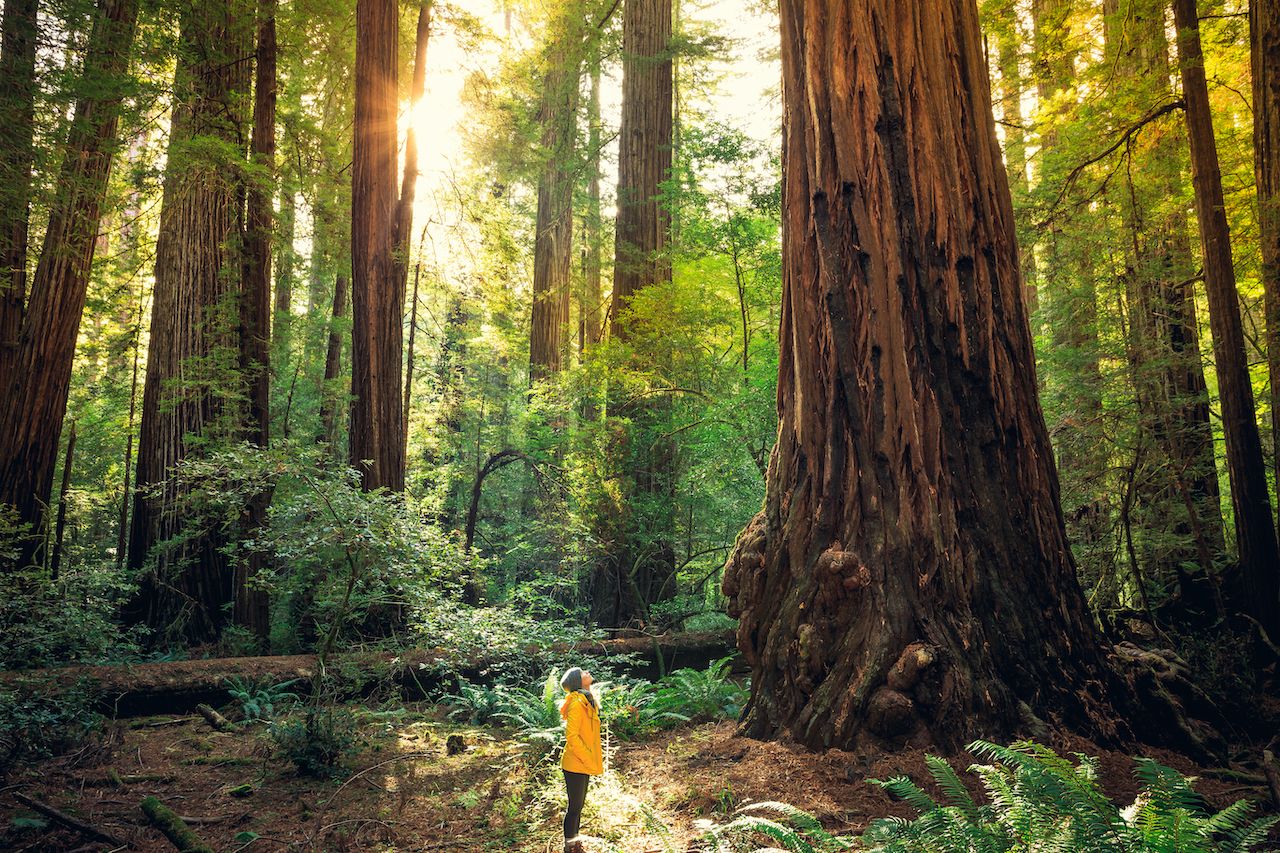
Photo: Stephen Moehle/Shutterstock
The tallest trees in the world, California’s coast redwoods, grow on a narrow sliver of land on the California coast, from south of the Bay Area up to the border with Oregon. There are many parks in California where visitors can see redwoods for themselves, including Redwood National Park, Muir Woods National Monument, and Calaveras Big Trees State Park. California’s coast redwoods can reach a height of 367 feet and a base width of 22 feet.
Wisteria Tunnels — Kitakyushu and Tochigi, Japan
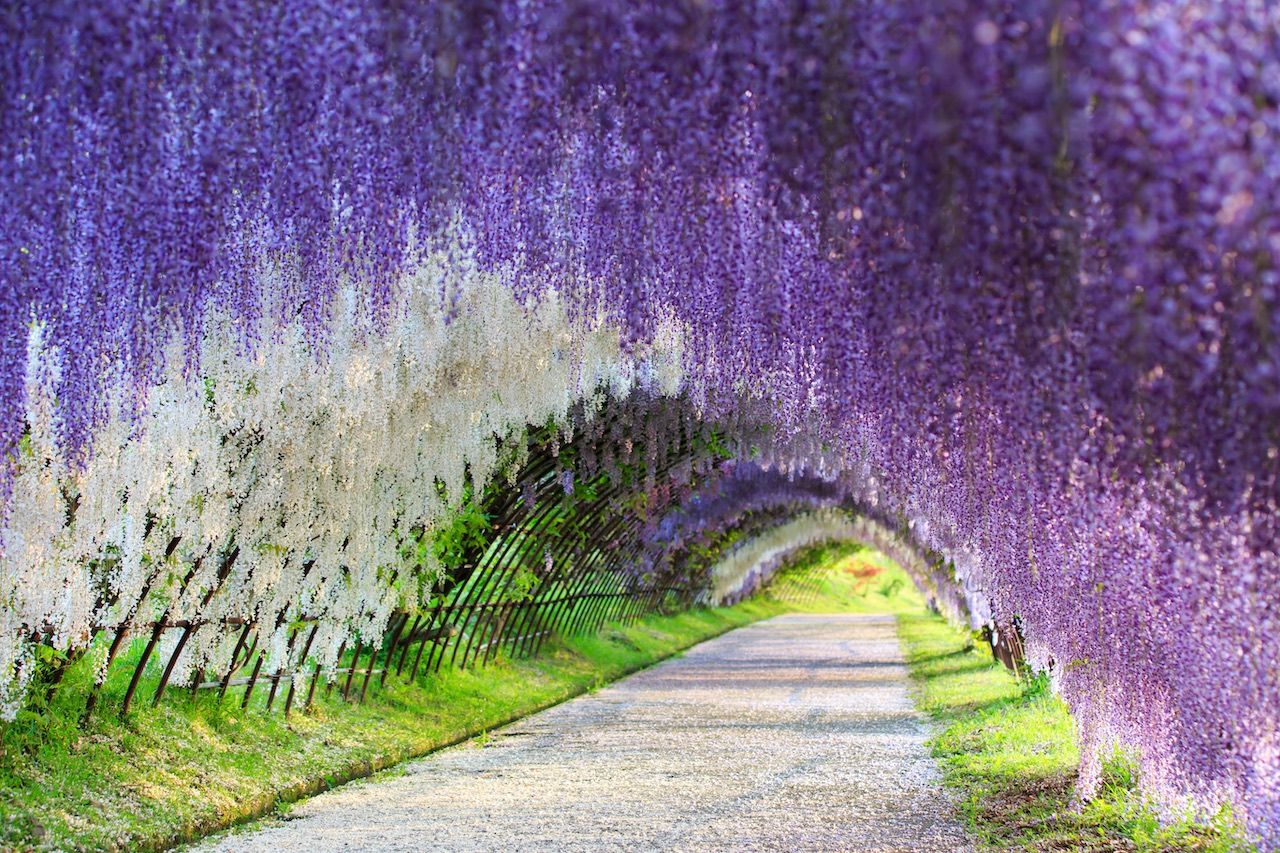
Photo: dk tazunoki/Shutterstock
Wisteria is a type of flowering vine that can be trained to take beautiful shapes. Every year, during the Wisteria Festival (Fuji Matsuri) in late April or early May, the 330-foot-long wisteria tunnels of Kawachi Fuji Gardens in Kitakyushu (on the island of Kyushu), and the enormous wisteria “tree” of Ashikaga Flower Park in Tochigi (on the island of Honshu), bloom to give us the most beautiful and colorful natural spectacle.
Dead Vlei Trees — Sossusvlei, Namib Desert, Namibia
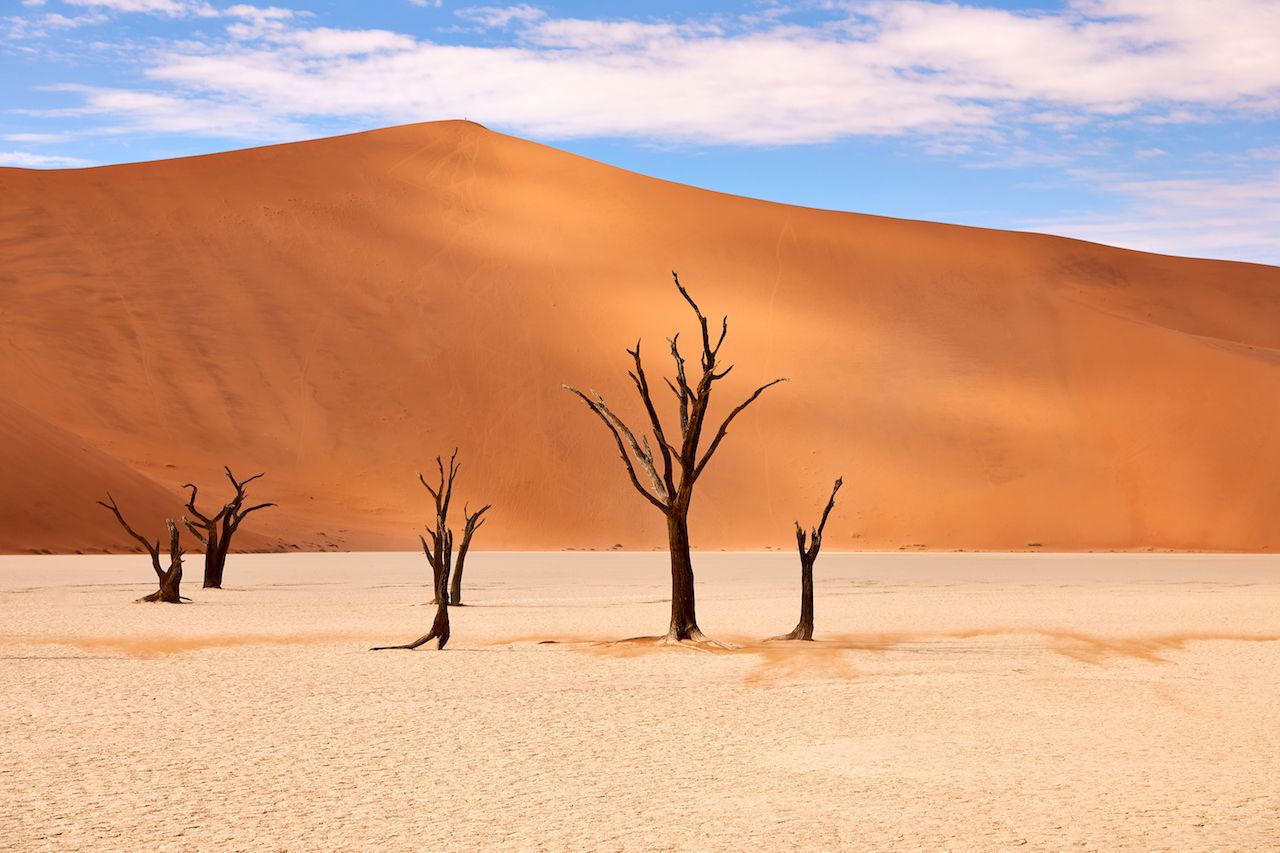
Photo: ArCaLu/Shutterstock
Sossusvlei in the Namib Desert is home to the Dead Vlei trees, which somehow manage to be both dismal and beautiful. The clay landscape was once in the floodplain of the Tsauchab River, but when the climate dried up some 900 years ago, sand dunes got in the way of the river flow and the trees all died. It’s too dry for trees to decompose, so they have been burnt black by the sun, and now form a forest of scorched trees, some over 1,000 years old.
Giant Sequoias — Sequoia National Park, California, US

Photo: zdenekkounovsky/Shutterstock
Sequoia and Kings Canyon National Parks in California are home to the largest trees in the world, by volume. “General Sherman” is the largest tree on Earth by trunk volume, and draws hundreds of thousands of visitors a year to the park’s Giant Forest that is home to 8,000 sequoias. Sequoias can reach the age of 3,400 years old.
Ta Prohm Temple Trees — Siem Reap, Cambodia
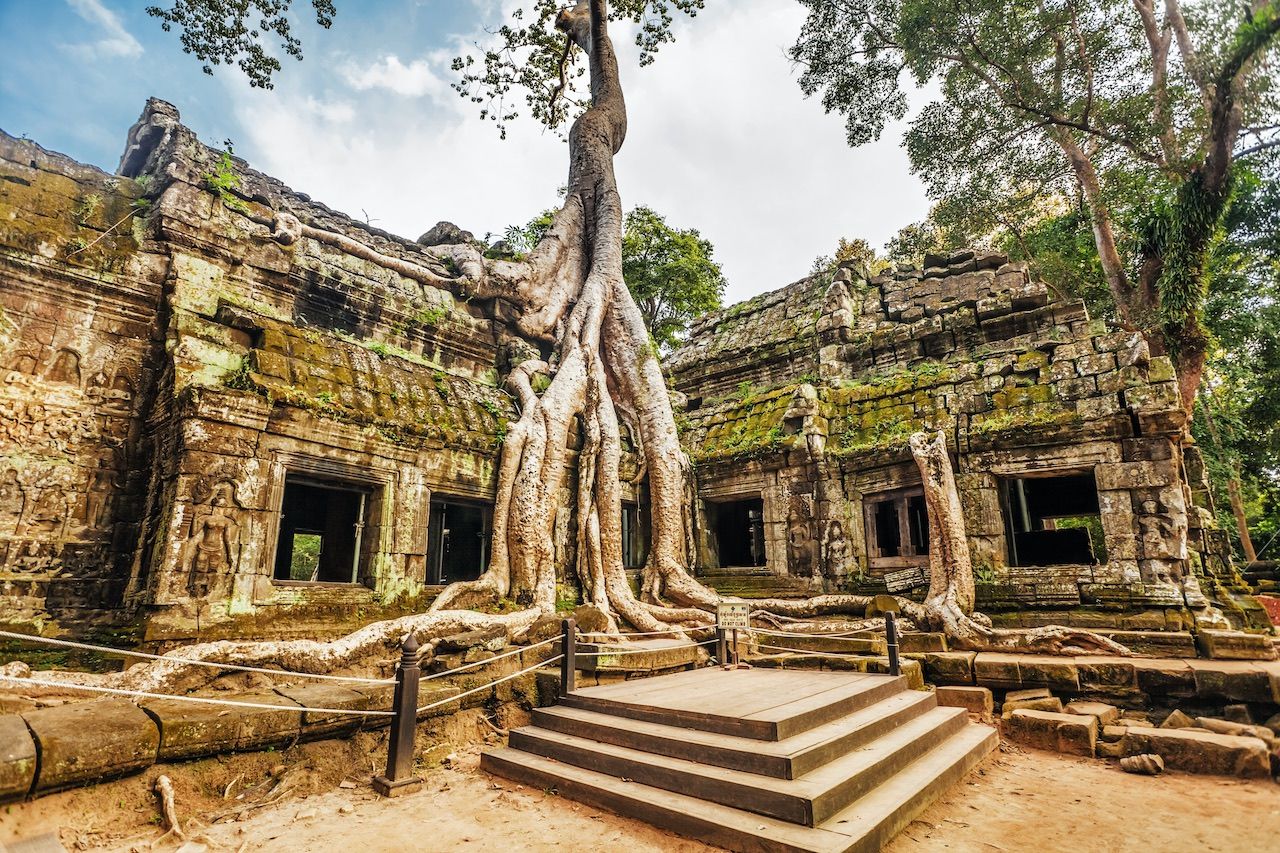
Photo: DeltaOFF/Shutterstock
Ta Prohm is one of the many beautiful temples in Siem Reap, Cambodia. Its popularity comes from the ceiba and fig trees that are slowly reclaiming the centuries-old stonework, their roots encroaching on the ruins, in a scene that shows the power of nature. You can wander through the temple’s corridors and explore the more natural maze created by the expanding roots.
Angel Oak — Johns Island, South Carolina, US

Photo: Mike Ver Sprill/Shutterstock
The famous angel oak is estimated to be between 400 and 500 years old. It’s growing just outside of Charleston, South Carolina, in the Angel Oak Park on Johns Island. Angel oak is considered one of the oldest living oak trees east of the Mississippi River. Four hundred thousand visitors come to the park each year to see this magnificent 65-foot-tall tree.
Crooked Forest — Gryfino, Poland
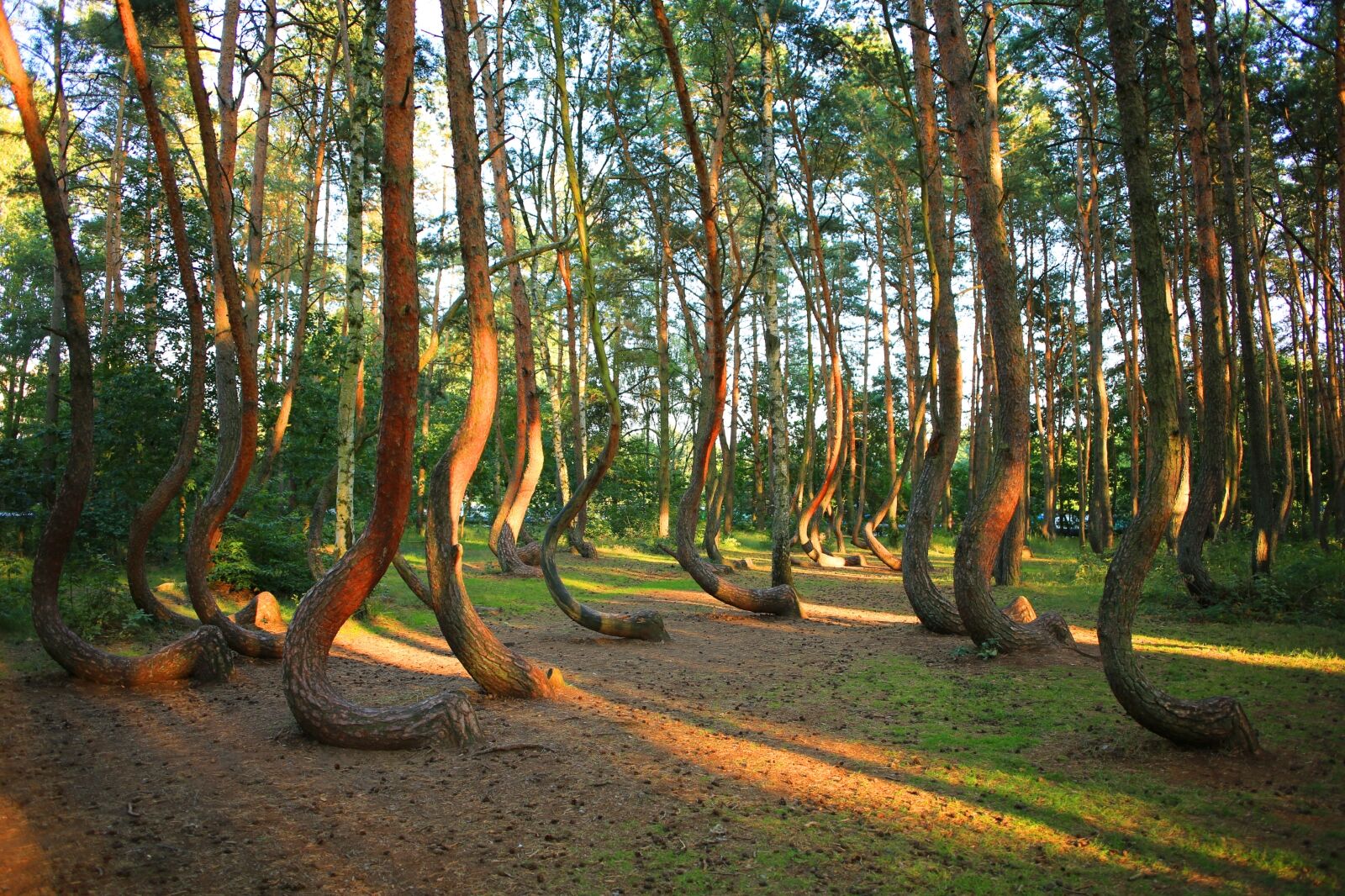
Photo: Traveller70/Shutterstock
On the outskirts of the town of Gryfino in northwestern Poland stands a small grove of roughly 400 Scots pines, each bending sharply near its base before arching back toward the sky. Planted in the early 1930s, the trees grew together in this peculiar formation, their trunks sweeping north in near-perfect unison. The cause remains a mystery. Some foresters believe the saplings were intentionally shaped to produce curved timber for shipbuilding or furniture, while others attribute it to damage from snow or shifting soil. Whatever the reason, the result is striking.
Rainbow Eucalyptus — Papua New Guinea, Indonesia, and the Philippines
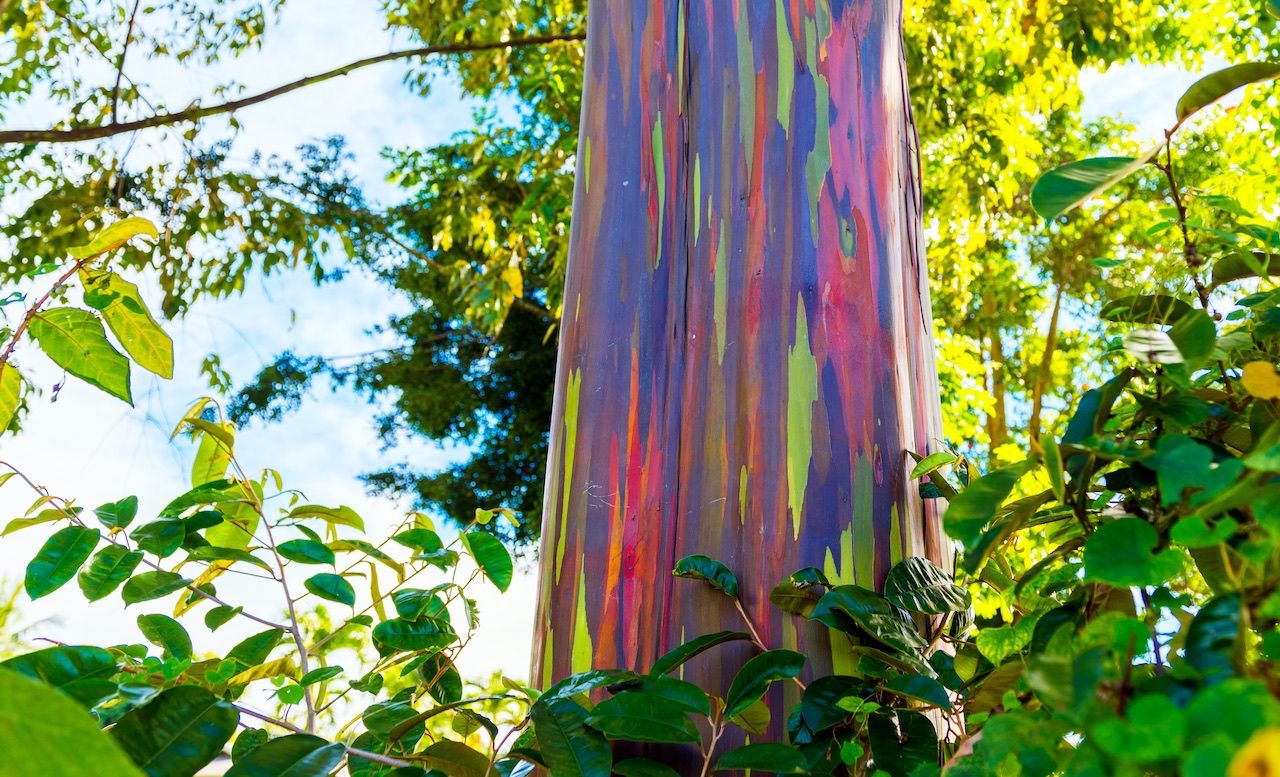
Photo: gg-foto/Shutterstock
The rainbow eucalyptus is native to the rainforests of the Philippines, Indonesia, and Papua New Guinea. Their bright coloration appears on the tree’s bark which peels off to reveal striking shades of green, purple, orange, and pink that are reminiscent of “your average four-pack of assorted highlighters,” Australian Geographic explained. Some have been planted in the US, including Balboa Park in San Diego, California, as well as in specific spots Kauai, Maui, and Oahu, in Hawaii.
Ponderosa Pines — Bryce Canyon National Park, Utah, US
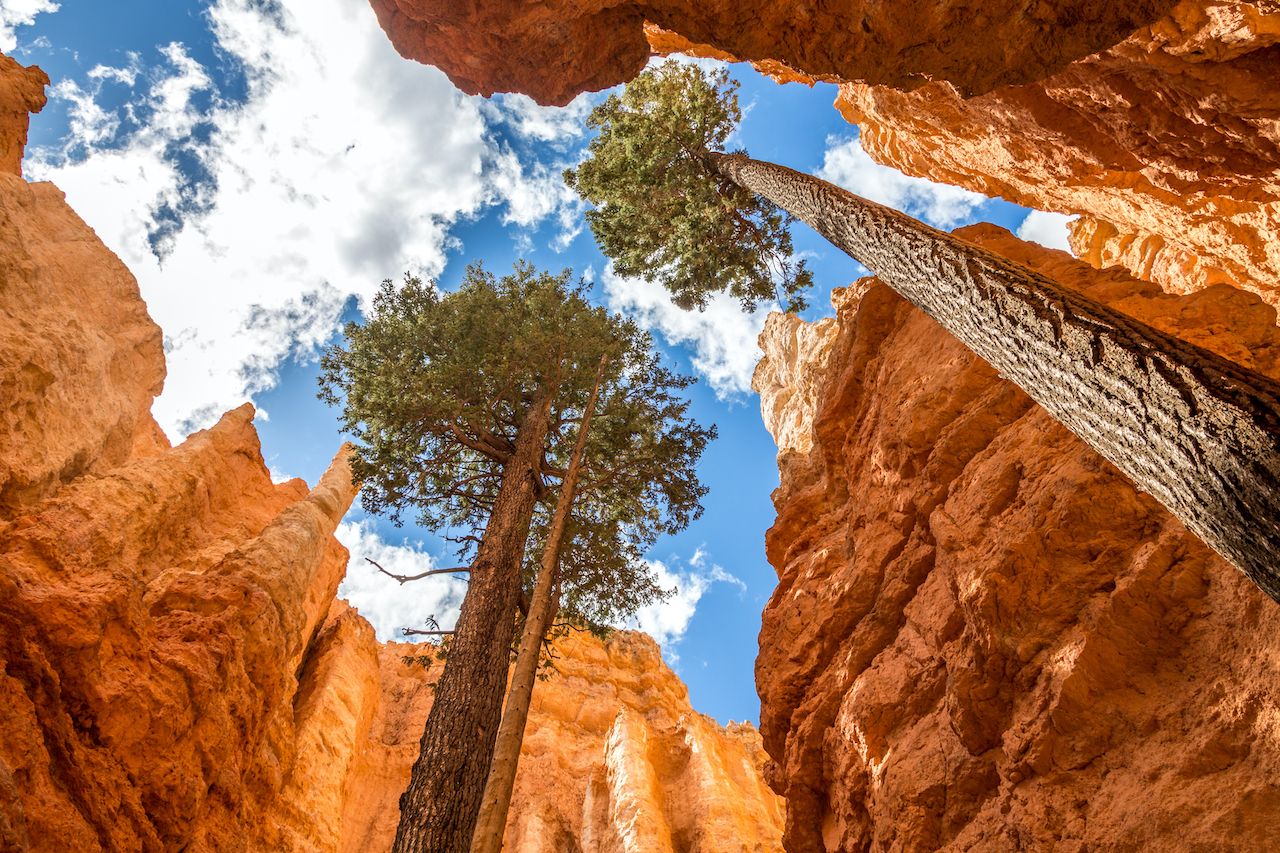
Photo: mariakray/Shutterstock
The Ponderosa pine is one of the American Southwest’s tallest trees, growing to heights up to 200 feet. The Ponderosa pine can be seen throughout western North America, but are most famous for appearing in Ponderosa Canyon in Utah’s Bryce Canyon National Park. The canyon is named for the unique trees, which can be found on the canyon floor. If you’re not sure you’ve run into a Ponderosa tree, try smelling its bark. According to the National Park Service, “Ponderosa Pine bark smells like vanilla or butterscotch.”
Great Basin Bristlecone Pines — Great Basin National Park, Nevada, US
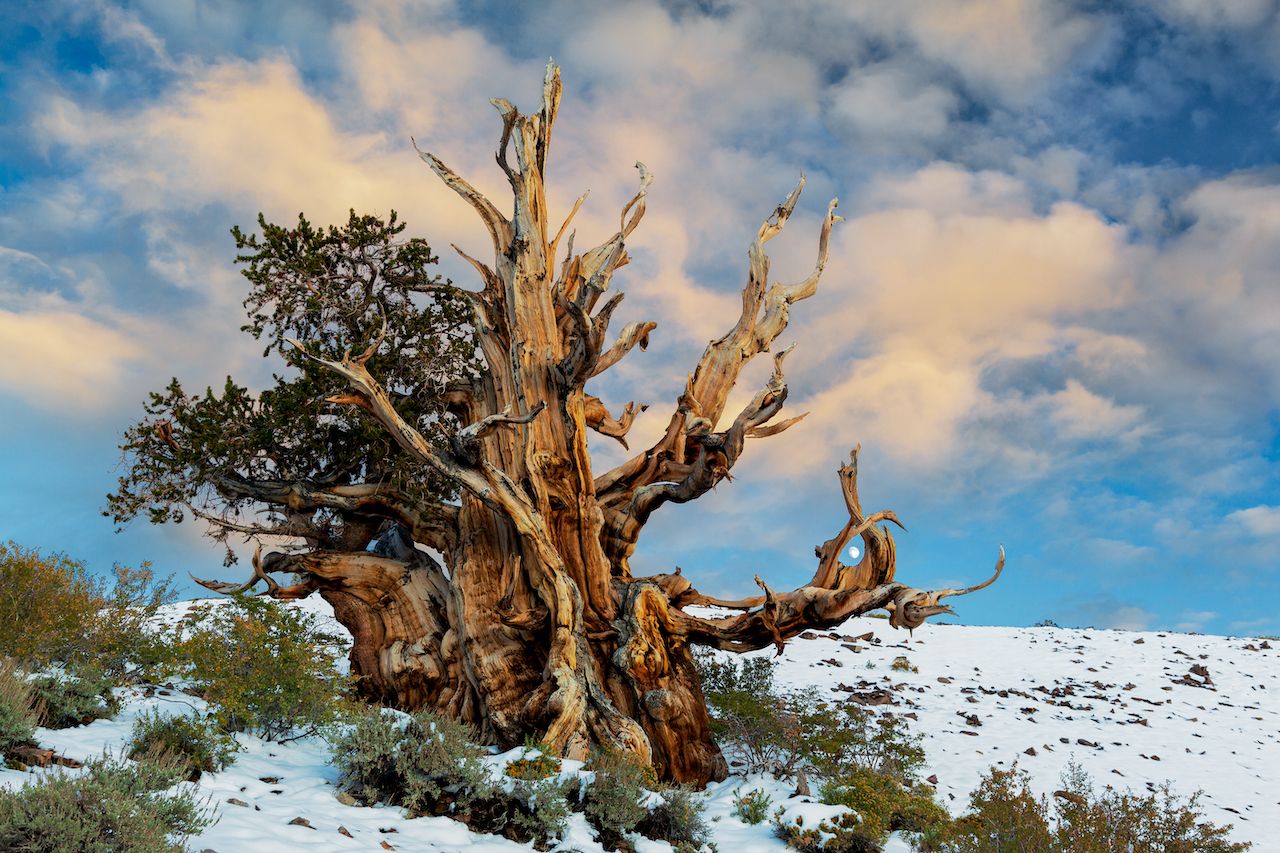
Photo: Greg Mitchell Photography/Shutterstock
Found only in California, Utah, and Nevada, the Great Basin bristlecone pine is the oldest non-clonal species on the planet. Very resistant to harsh climate and growing conditions, it grows so incredibly slowly that it’s able to stave off insects, fungi, rot, and erosion, allowing for a very long lifespan — some live over 5,000 years. The best places to see some is in Great Basin National Park, where there are three groves.
The Major Oak — Sherwood Forest, England
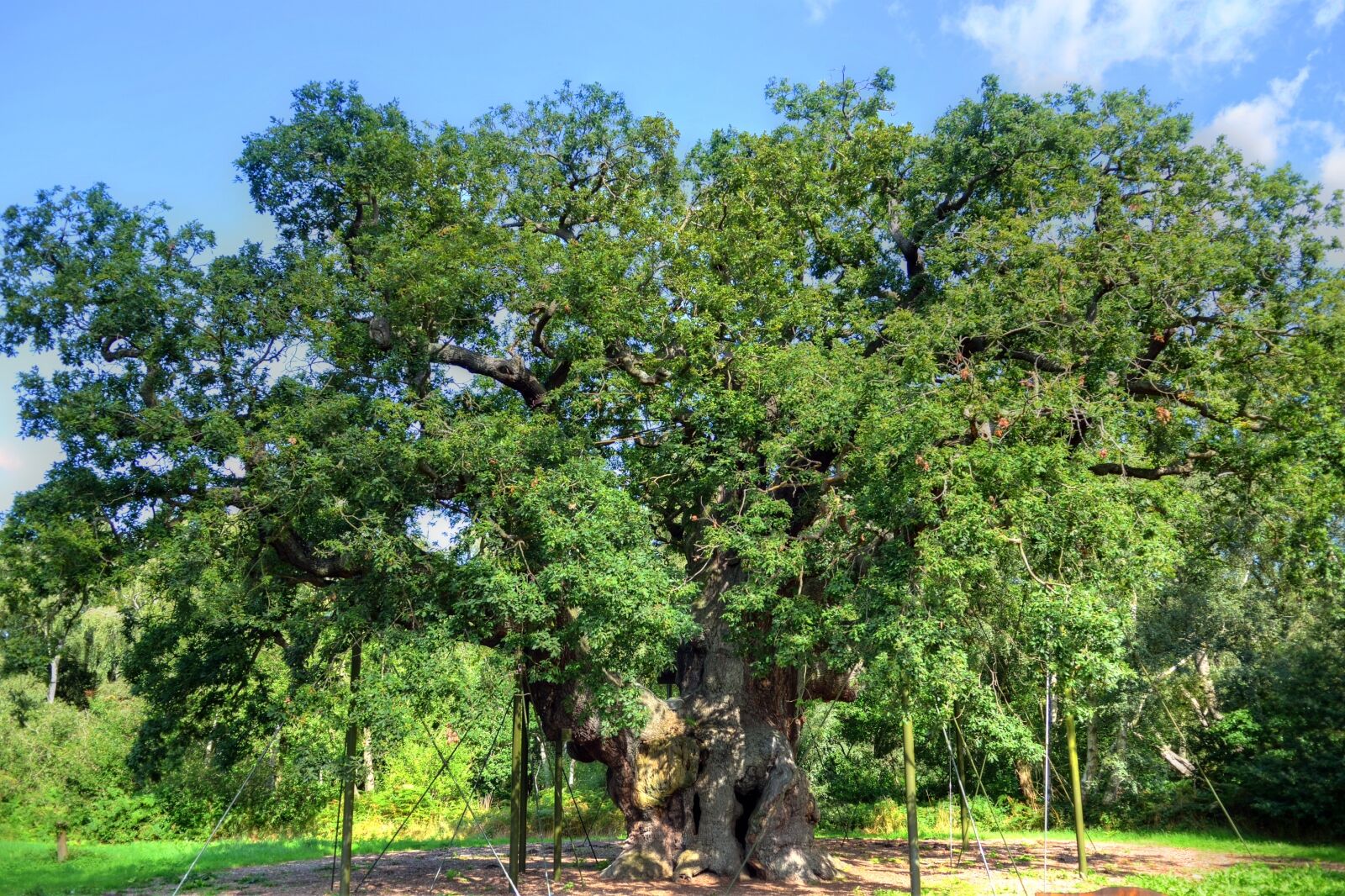
Photo: CO Leong/Shutterstock
In the heart of Sherwood Forest, in central England’s county of Nottinghamshire, about two hours north of London, stands the legendary Major Oak — a colossal English oak believed to be 800 to 1,200 years old. Its gnarled trunk measures around 33 to 36 feet in circumference, and its canopy spans more than 90 feet. According to local lore, this was Robin Hood’s hideout, though its age likely postdates his era. The Major Oak’s vast branches are now supported by discreet metal poles to prevent collapse. Though the trunk is hollow at the center, the tree is still living and continues to draw visitors from around the world.
Białowieża Forest — Poland and Belarus
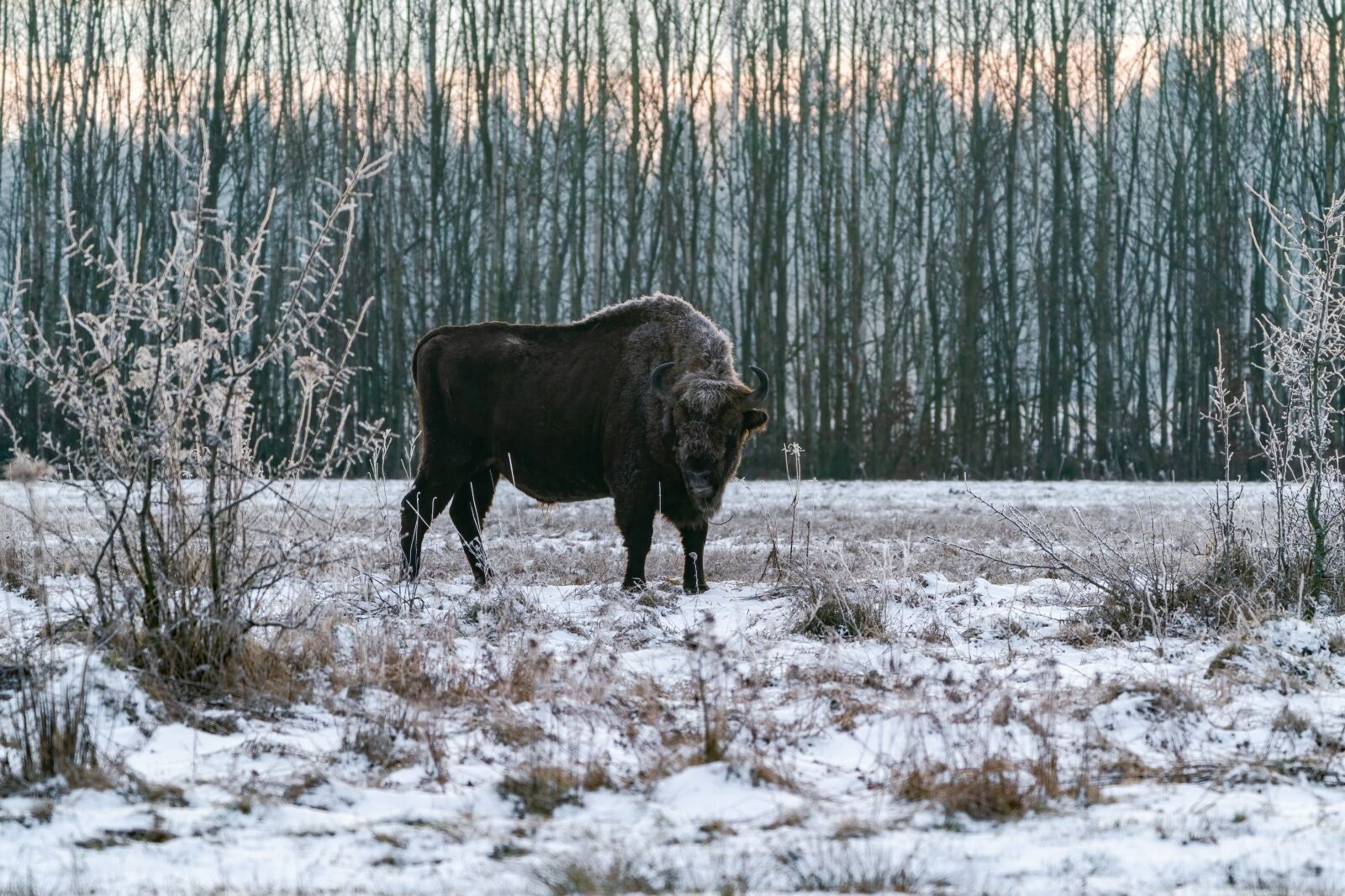
Photo: BBA Photography/Shutterstock
This vast woodland, straddling the border between Poland and Belarus, is one of Europe’s last surviving primeval forests. Once part of a great forest that covered much of the continent, it is now a UNESCO World Heritage site and home to more than 800 European bison — the largest remaining wild herd in the world. On the Polish side, Białowieża National Park protects old-growth sections filled with ancient oaks, spruces, and hornbeams, where some trees reach heights of over 150 feet.
Bamboo Forests — Kyoto, Japan
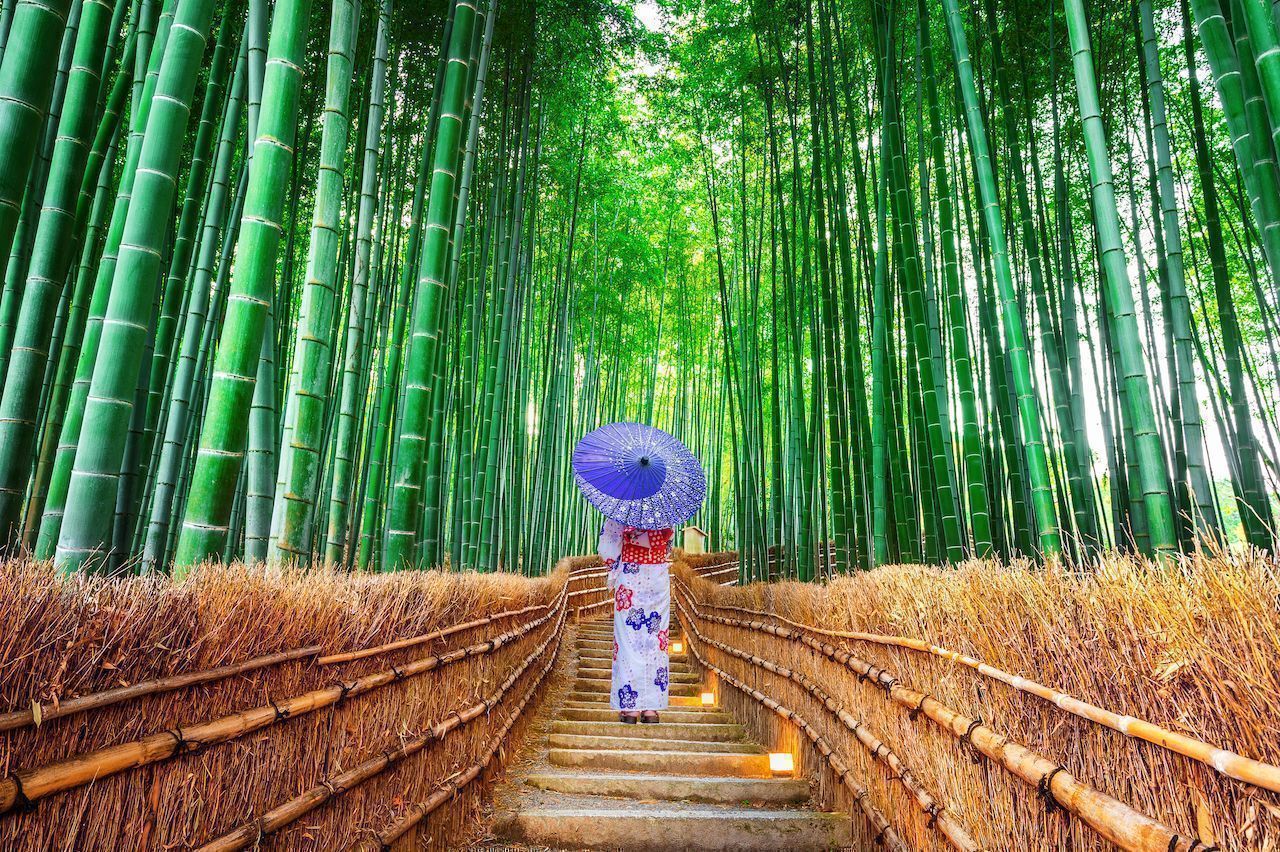
Photo: Guitar photographer/Shutterstock
Like wisteria, bamboo is another plant that technically isn’t a tree — it’s grass — but when you’re walking through a dense “forest” of them, you can hardly tell the difference. Sagano Bamboo Forest near Kyoto, Japan, is the most famous of them, but you can also find them in places like Maui in Hawaii.
Joshua Trees — Mojave Desert, California, US

Photo: Heavy T Photography/Shutterstock
The American Southwest’s famous Joshua trees are not true trees but a species of yucca (Yucca brevifolia), part of the agave family and native to the Mojave Desert. Joshua trees have spines and produce white-green flowers at the tip of their branches in the spring. Joshua trees are found mostly in the Mojave Desert, especially in Joshua Tree National Park in California, and have become one of the region’s most defining features. According to the NPS, you may also find them “growing next to a saguaro cactus in the Sonoran Desert in western Arizona or mixed with pines in the San Bernardino Mountains.”
Goblin Forest — Egmont National Park, New Zealand

Photo: Elena Yakusheva/Shutterstock
Egmont National Park, on the western coast of New Zealand’s North Island, surrounds the near-perfect cone of Mount Taranaki. Along its lower slopes lies the Goblin Forest, a dense stand of kāmahi trees whose trunks twist and fuse together under layers of moss, lichen, and fern. Many of these trees first took root on fallen logs, then grew downward and around them, creating the warped, interwoven shapes that define the forest today.
Blue Jacaranda — Buenos Aires, Argentina
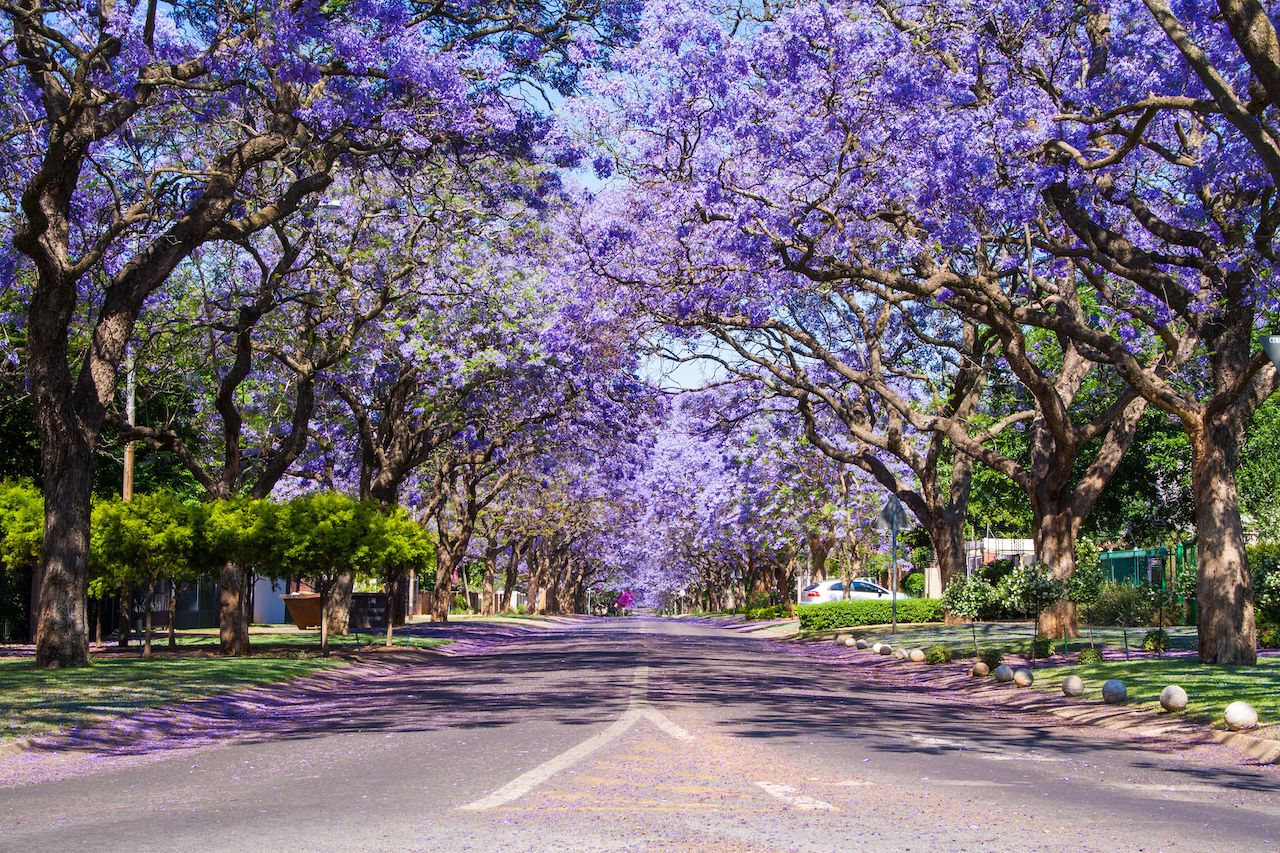
Photo: Vanessa Bentley/Shutterstock
The blue jacaranda, a fast-growing ornamental tree native of South America, is known for stunning its bell-shaped violet flowers. The blue jacaranda was introduced in many other countries over time, including, Australia, Hawaii, Kenya, Tanzania, South Africa, and Zambia. While beautiful, the blue jacaranda is considered an invasive species outside a few places in South America.
Cherry Blossoms — Japan
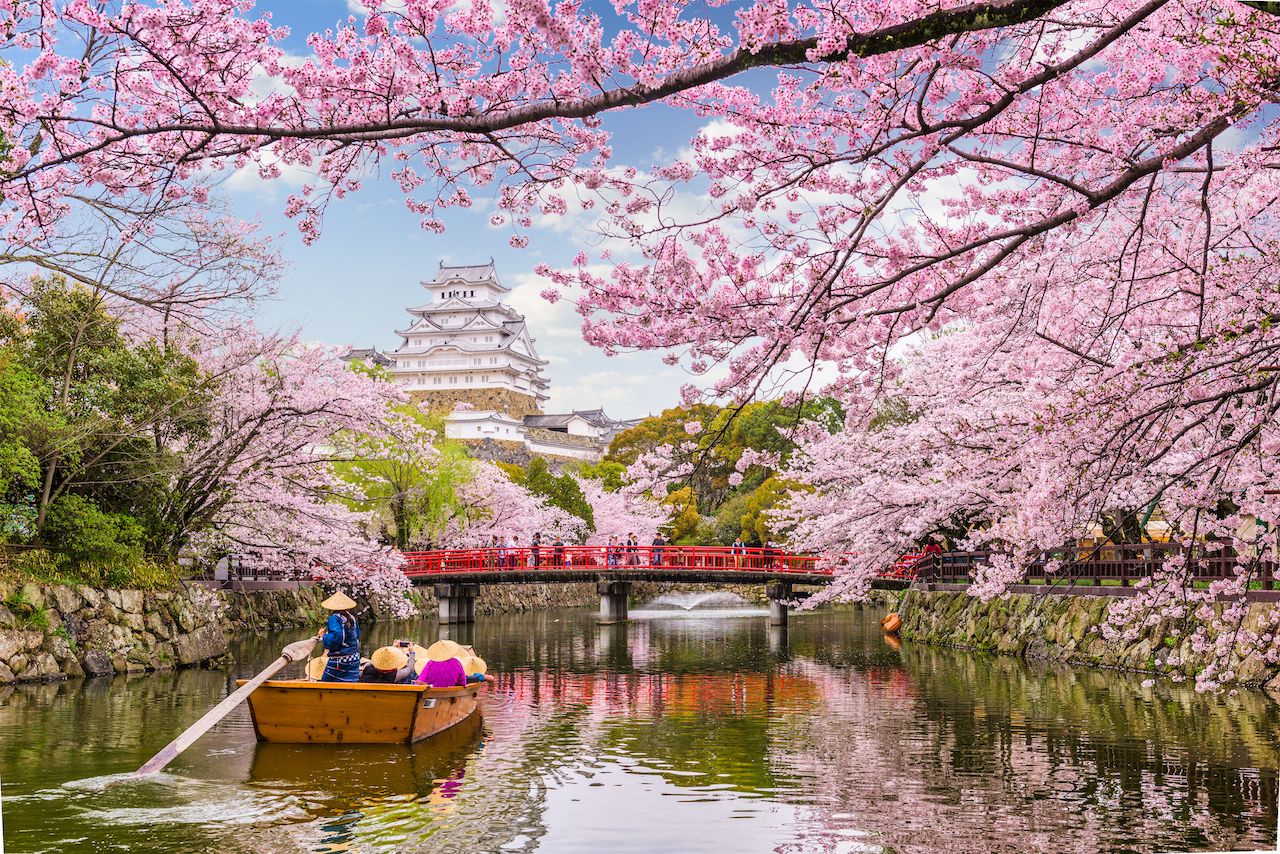
Photo: Sean Pavone/Shutterstock
From the German city of Bonn, to the grounds of the Imperial Palace in Tokyo, to DC’s Tidal Basin, cherry blossoms mark the arrival of spring. The blooming of the cherry blossoms is nothing short of a phenomenon in Japan, with blossom-themed festivals held in many parks around the country. Similarly, in Washington, DC people come from all over for the National Cherry Blossom Festival each spring.
Spider Trees — Sindh, Pakistan
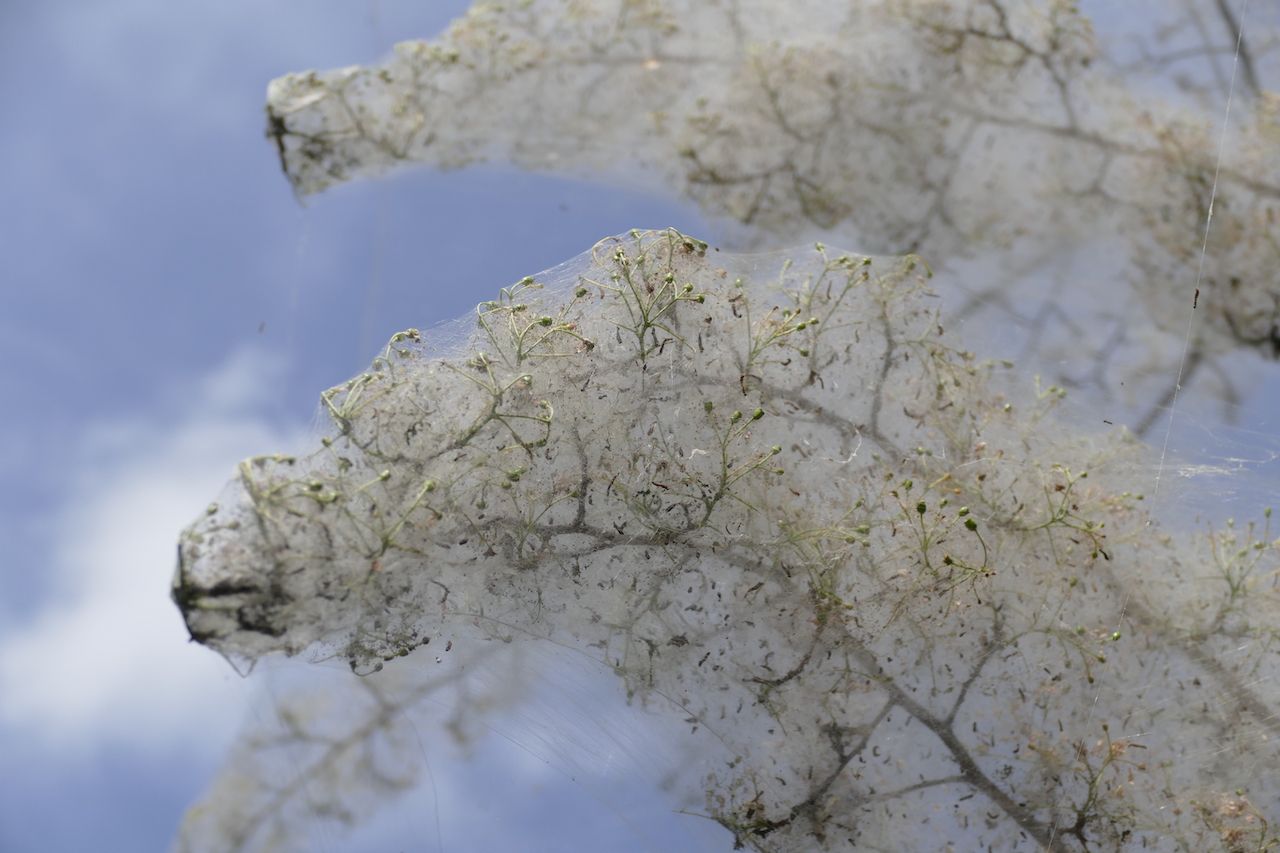
Photo: luciezr/Shutterstock
In 2010, when catastrophic monsoon flooding covered much of Sindh Province in southern Pakistan, millions of spiders escaped the rising waters by climbing into trees. Within weeks, the branches were shrouded in dense webs that gave the landscape a ghostly, silken appearance. Locals noted that mosquito numbers seemed to drop in areas where the trees remained cocooned, though the connection has never been scientifically proven. The spectacle lasted months before the webs collapsed under rain and wind, leaving behind a haunting reminder of how even small creatures adapt to environmental upheaval.
Buttress Roots — tropical rainforests
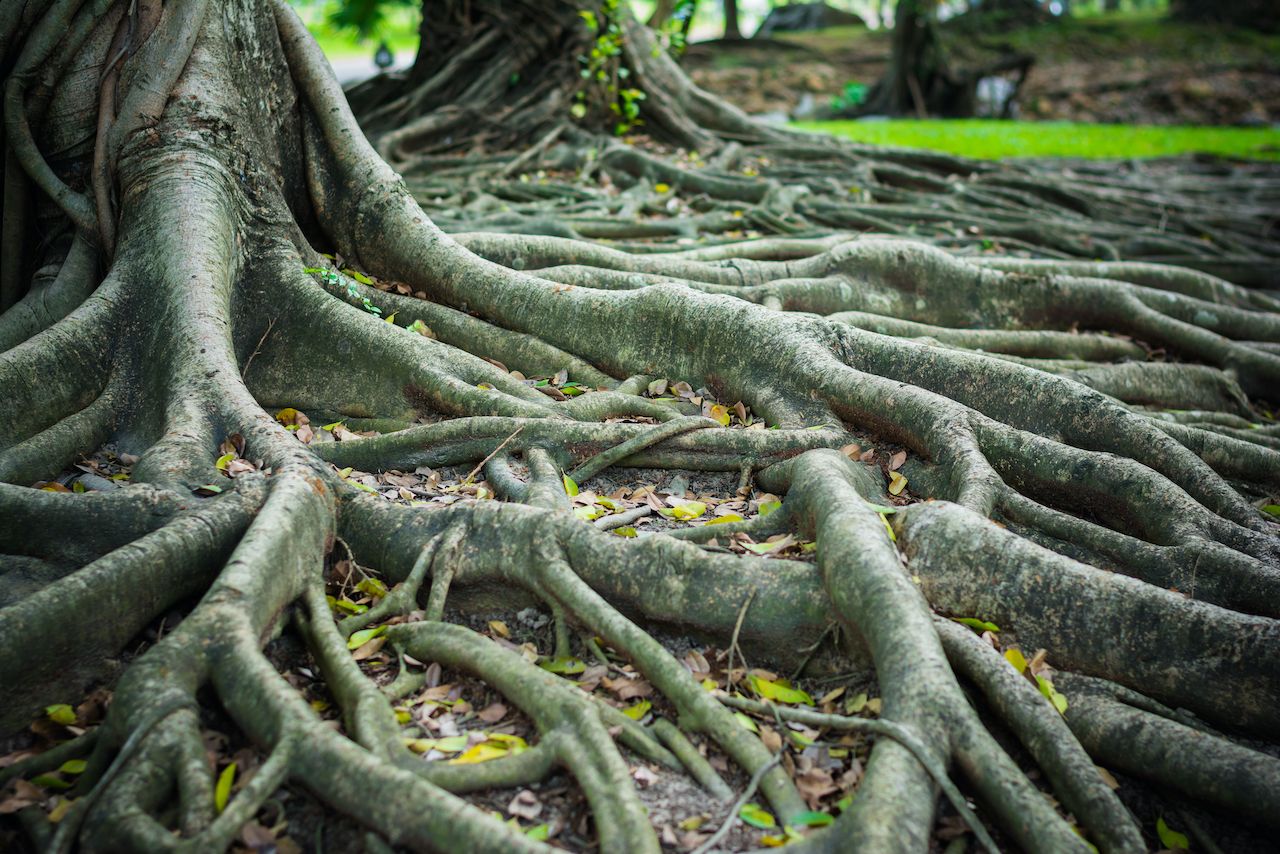
Photo: sittitap/Shutterstock
These roots, known as “buttress roots,” can be found on many different species of tree, although they are more commonly seen on trees in tropical rainforests. They are a form of widening and spreading of the trunk that act to help large, top-heavy trees stay upright.
Banyan Trees — India
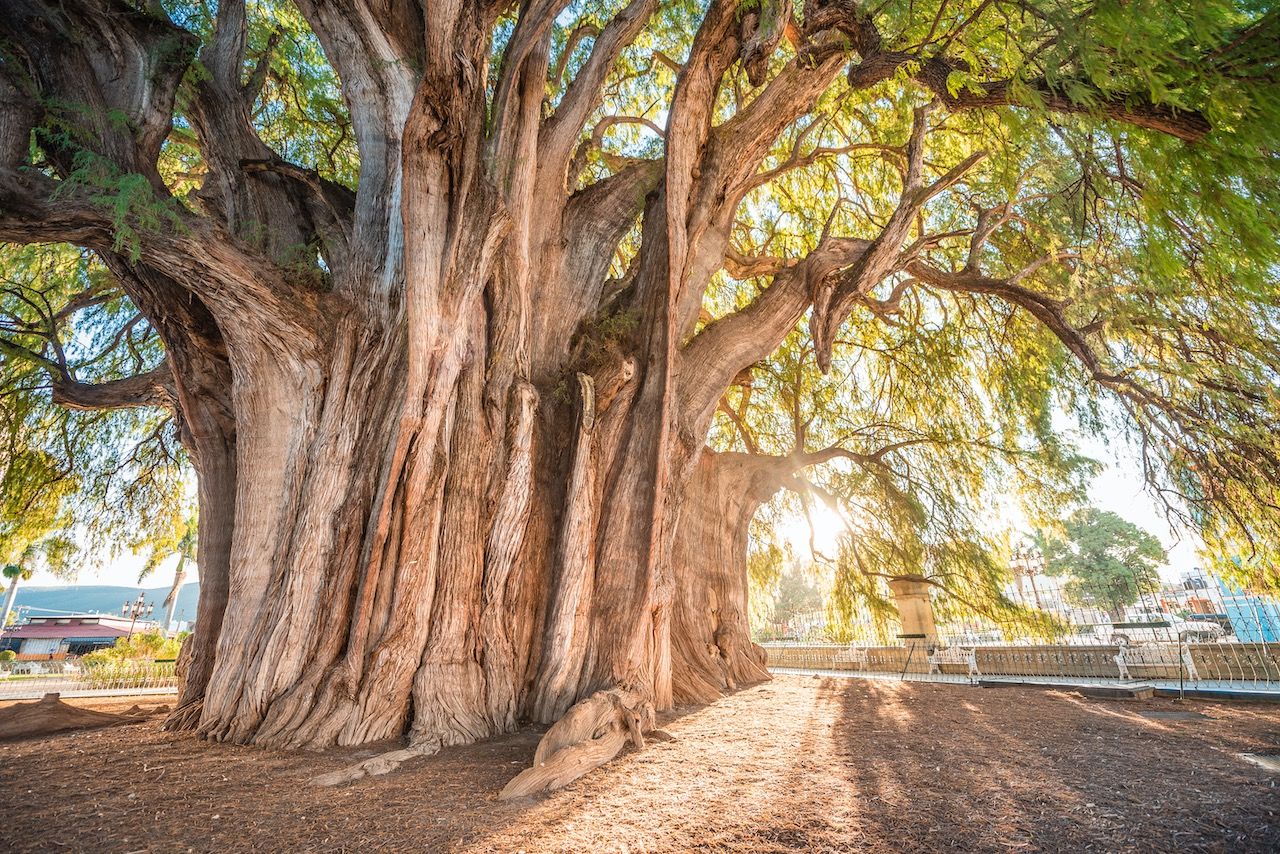
Photo: Rubi Rodriguez Martinez/Shutterstock
Banyan trees are short and stout trees native to India. Their particularity, what makes them unique trees, is their aerial roots that develop from their branches and drop to the ground to grow new trees. This growing technique is the reason why Banyan trees have such wide trunks — it’s actually several trunks that grow closely together. One of the best-known banyan trees is the Arbol del Tule, a tree estimated to be between 1,433 and 1,600 years old in the Mexican state of Oaxaca, whose trunk has the widest-known circumference in the world at 119 feet (according to the Guinness World Records in 2005).
Axel Erlandson’s Circus Trees — California, US
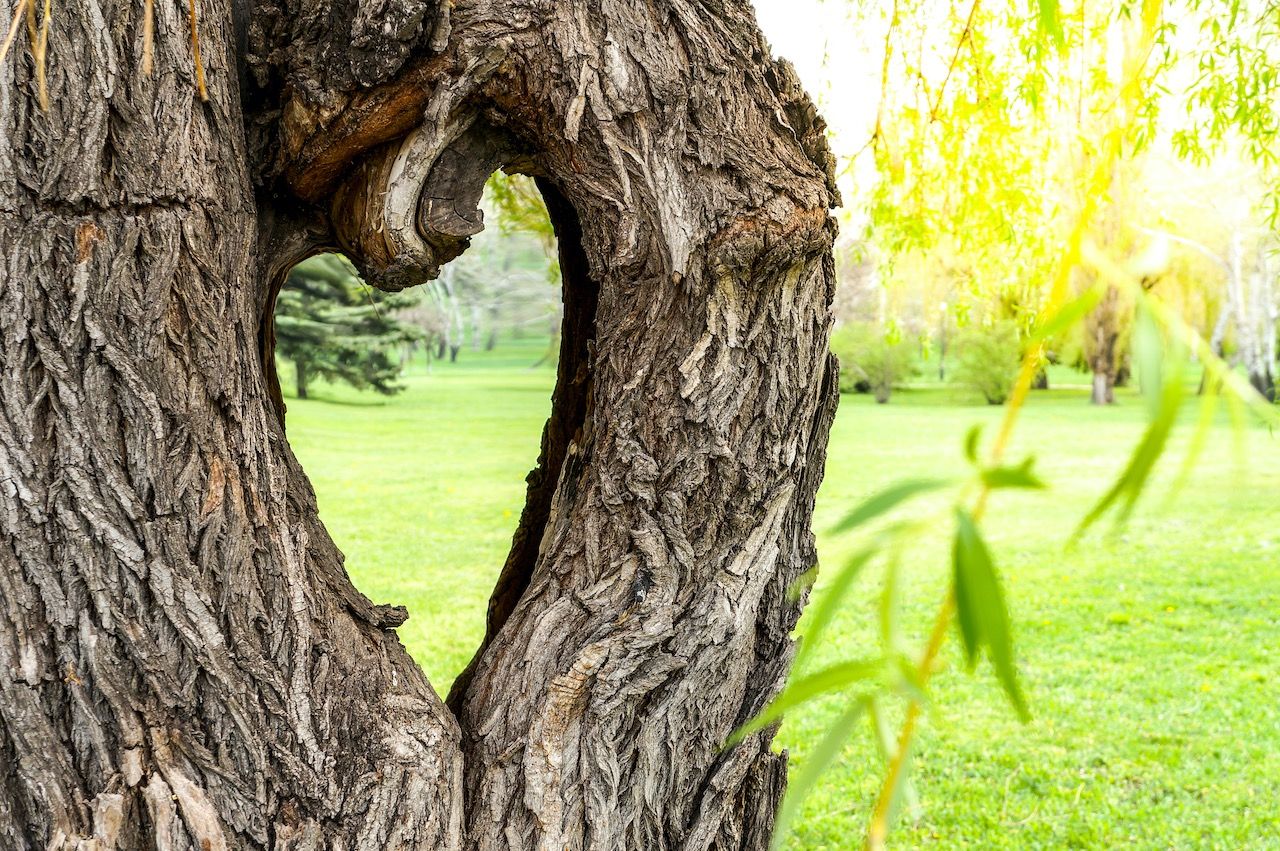
Photo: SunCity/Shutterstock
The strangest trees you’ll ever see aren’t ones you’d find in the wild. They were created by the Swedish-American farmer Axel Erlandson, who engaged in the hobby of “tree shaping” and even opened an attraction called “The Tree Circus” in 1947. Twenty-five of his “Circus Trees” are still alive today at Gilroy Gardens Family Theme Park in Gilroy, California. If you can get past the fact that these tree formations aren’t natural, but instead the result of shaping and grafting techniques, visiting the park is a cool experience.
Japanese Maples — Japan
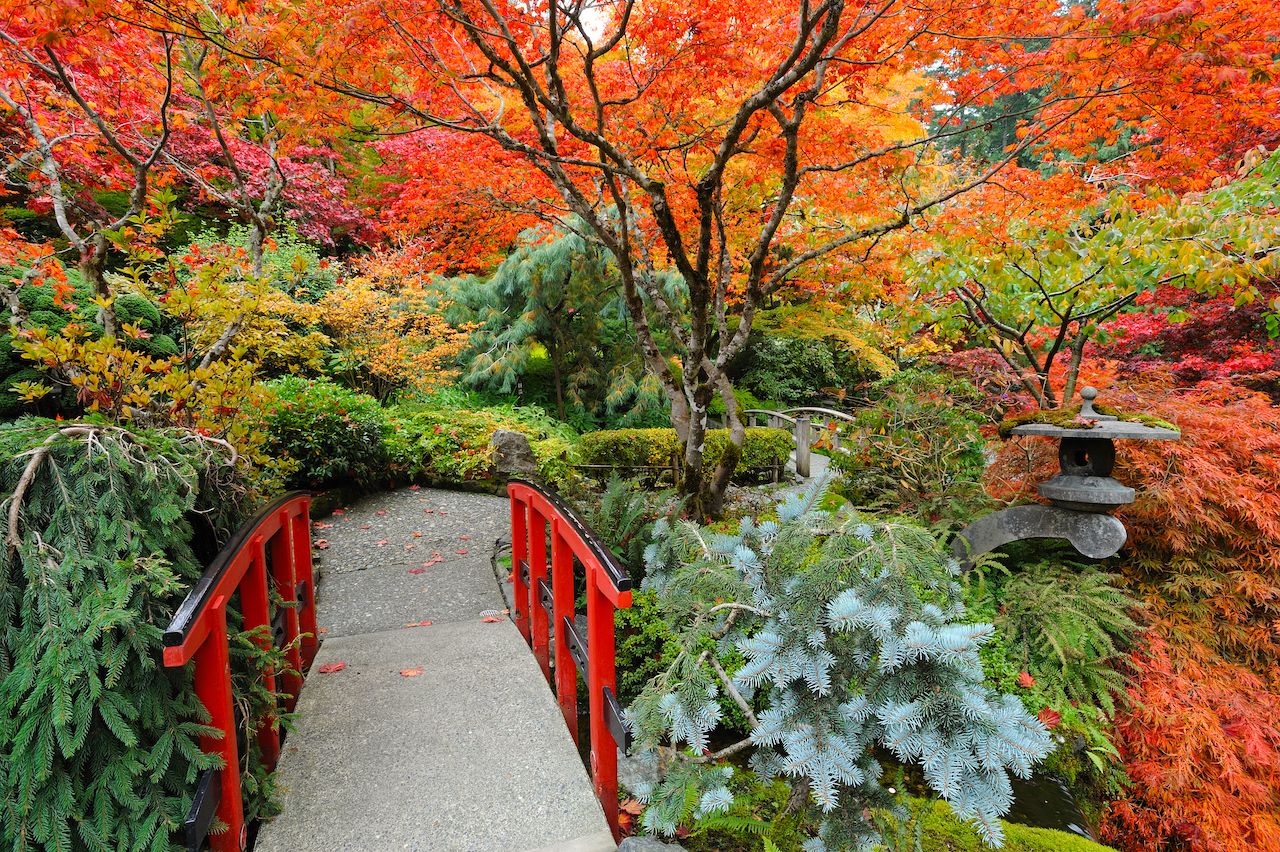
Photo: 2009fotofriends/Shutterstock
Japanese maples are native to Japan, Korea, China, Mongolia, and Russia, and have also been grown in temperate climates around the world since the 1800s. Unlike other plant species, the Japanese maple varies in leaf-form, color, and tree shape, making each one unique. There are more than 1,000 varieties of Japanese maple in the world today.